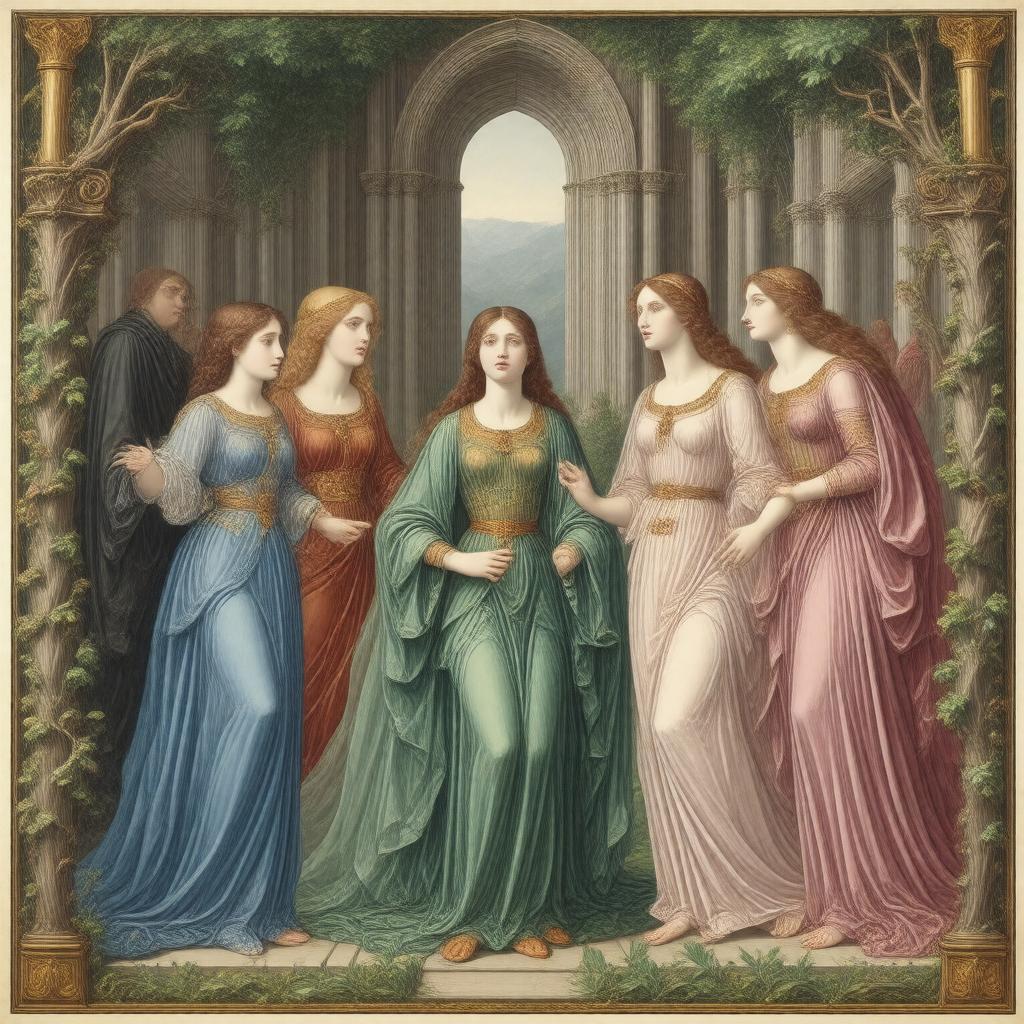Prompt
"Create an image of a medieval illuminated manuscript page from the 14th century, featuring a dreamlike scene with a woman surrounded by classical mythological figures, such as Cleopatra, Dido, and Ariadne, all depicted in elegant, flowing attire, set against a backdrop of lush greenery and ornate Gothic architecture, rendered in a style reminiscent of the Ellesmere Manuscript, with intricate gold filigree and delicate line work, symbolizing the themes of female virtue, love, and suffering that permeate Geoffrey Chaucer's poem, The Legend of Good Women."

